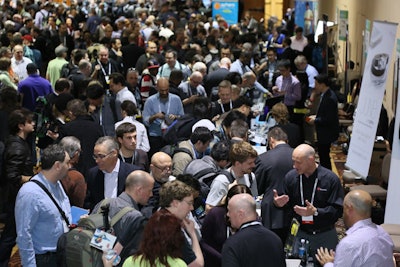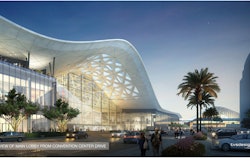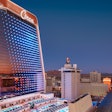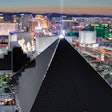
The International C.E.S. wrapped in Las Vegas on Friday, but the dialogue over the event’s continued relevance and importance—a running sidebar that’s become standard fare alongside various well-established trade shows—continues.
It’s true, for instance, that many brands choose standalone event formats throughout the course of the year to make major product announcements, making the show's slate of news briefings less of a draw for attendees in recent years. But the actual technology debuts were always only one component that made C.E.S. so important to industry professionals.
To wit, it’s the face-to-face opportunities that remain a huge reason many say they attend. "Now that so many agencies, brands, and media sellers converge, C.E.S. becomes valuable for the same reason Cannes and South by Southwest did: because everyone else is there,” argued a recent article in Ad Age. "Rather than schedule meetings with execs and partners spread among many states over several months, agencies and companies like Google, Yahoo, NBC, and Facebook can pack them all into one week on the Strip.” The same piece cites G.E. digital marketing chief Linda Boff who describes C.E.S. as one of just two or three times a year that the entire industry is in one place—including "execs on the media side, the tech side, the platform side.”
With more than 150,000 participants in more than two million square feet of space at the Las Vegas Convention Center, "It’s all those people, the pressing of the flesh, and the sharing of tall tales,” which Mashable identified as a key reason major players still find it critical to keep coming back.
And of course, part of live-event interaction is getting inspired, feeding off others’ energy, and encountering surprises that might jump-start an idea in unexpected ways—and those face-to-face synergies aren’t likely to happen via email or seated in a chair for a one-off presentation without time for networking.
Of course, as Ad Age points out, "For brands, the real business of C.E.S. occurs in private hotel suites and during intimate dinners, where the industry's elite gather to hammer out deals and strategies that will be later publicized in headlines throughout the year.”
And some brands don’t even set foot on the show floor. Lenovo, for instance, took over the Venetian's AquaKnox restaurant, decking it with tables for products and a stage where bands performed during nightly parties and building out a chunk of the dining area for executive meetings, Ad Age reported.
But it’s these important satellite interactions with key industry players—whether they take place in restaurants, hotel rooms, or even after-hours in nightclubs—that make traveling to Vegas worth it for so many industry pros during the buzzy C.E.S. week.
Mashable further points out that the show has evolved right along with culture at large, with its products and topics including traditional electronics and technology, sure, but also ways the products interplay with the concepts of fashion, cars, security, and more. The expo’s reach, in that way, is in line with the cultural conversations about our lives’ total interconnectedness with technology—and that topic is every bit as relevant as ever. And it's not just germane to a rarefied insider tech crowd, but to an ever-widening array of attendees, marketers, and media.
Beyond that, C.E.S. remains a forum for event and marketing innovation that continues to inspire even some of the most jaded, longtime attendees. This year, for instance, Twitter opted to forgo more traditional hotel room meetings in favor of a more interactive approach to marketing its brand, including touch-screen tables and other tech interfaces. Twitter's vice president of global brand strategy Joel Lunenfeld, who hosted the program, appears in an Ad Age video discussing the approach: “It’s really a way to show that Twitter is about now. It’s public. And it’s in the moment.”
You might say that those same sentiments—“now” and “in the moment”—continue to apply to the decades-old show as a whole: Thanks to its unrivaled potential for face-to-face interaction that no metric can adequately track, not to mention its evolution to include the array of tech topics most relevant to culture at large, C.E.S. remains as important as ever to many marketers and attendees alike.



















